The happening took place in a vaulted cellar that was built in the 15th-16th century and allegedly used as a torture chamber. From the front of the garden an arbour led to the entrance of the cellar. At the front of the arbour, participants were welcomed by a baby carriage with two disintegrating dolls inside it locked in an embrace. Upon exiting the arbour, the invitees were greeted by the other initiator of the happening, T [Tamás Szentjóby – A. M.], who was buried in the ground up to his waist, typing. There was a shovel placed next to him that was tied with ropes to a duster opposite it. At the end of the rope, a pot had been hung with a live chicken inside it, which T occasionally pulled out of the ground and then released back down with the help of the rope.
Behind the typewriting figure, a baby carriage was in flames.
Next, the invited participants descended the stairs leading into the darkness of the cellar. The indicator lights of a powerful stereo amplifying system were the only source of light. After a nearly 15-minute wait in the nerve-wracking darkness, Pendereczky’s Hiroshima exploded from the speakers with a frenetic volume, distorted and chopped up to a state of virtual unrecognisability. As soon as the music was over, in the front of the area left empty to allow for free movement, a vase full of roses on a table was set on fire. The burning rose bouquet provided the space with some minimal light. In the front there was a dining table set for two with a vase and a food carrier on it. Two of us were sitting at the table on secessionist chairs thickly covered in mould. In the background, a human-size frame had been placed with a dresser to its right and a rusty bicycle wheel suspended above with a stopped clock in its centre. There were prop chests to both sides and a chair in the middle. Next to the audience, a mouldy chair had been fixed to the wall with rotten raffia, on it: a small blue pot with holes. The chicken tied into the pot was visible next to the table. Our attire was completely casual: suit jacket, white shirt, tie, and green sunshade on our heads. J [Miklós Jankovics – A. M.] was also similarly dressed. He was the third person, who, after the burning of the roses, switched on the lights. As it later became apparent, one of the main inadequacies was the absence of sufficient lighting. In the meantime, the microphone and the speakers continued to be in operation – as they were for the duration of the entire happening – amplifying and resounding even the smallest noise. According to a number of the participants, the sound effects were one of the strongest points of the happening, although, originally we did not intend to give the sound system such a significant role.
We began eating. Our lunch consisted of cold paprika potatoes. While eating, I stood up and started up the pendulum clock on the bicycle wheel. Because the key had been removed from the clock, the hands began to rotate at a great speed. This was not a prepped clock; it had already had this property before it was chosen as a prop for the happening. Later, I replaced the key, causing the clock to stop again. During the happening, the clock was stopped and restarted a number of times. The clock gently hummed and turned together with the bicycle wheel around its own axis. While we continued to eat, a few randomly placed and set alarm clocks went off. T tried to shove some paprika potatoes down the chicken’s throat, then held the squawking animal in front of the microphone. The beak met the microphone producing a sound that resounded in the cellar with the strength of a steam-hammer. Upon finishing our lunch, we drank from a thermos. Then we took out a large plastic bag and began to vomit into it. This did not go smoothly; the sounds of heaving filled the whole cellar. T put the chicken into the bag and pulled the whole thing over my head. Then he hammered nails into the plates. I produced three pairs of kid gloves from my prop chest, which, in a joint effort, we pulled onto the hands of J, who has been stood next to the frame. From here on, I am not sure of the chronology of events, it all gets blurry with repetition; the goal – staying alive – obscured the order of events. For the most part, I only remember the things I did in order to survive. From this point on, our actions were separate, but we continued to stay unified in the concept. I grabbed a cleaver and attempted to shatter the table and the chairs into small pieces. We detached a small handbag from J’s frame and smeared him with toothpaste. The small handbag contained two white mice, which I handed to a woman sitting in the front row. Later the mice were running back and forth among the participants. Sometimes they threw them back to us and we gave them back. We placed a combat helmet in front of J’s face and tied him to the frame. We then stood a bicycle frame and two rusty rollers on the broken table, tying them together so that the wheel was stuck between the handles of the two rollers. Later someone named this the sculpture of “The Roller That Is Not Going Anywhere”. We took out some liquid soap and smeared this creation, as well as J, with it. Some toothpaste was also applied to the wheel. After this, we took a large amount of feathers and threw it into the air, covering the roller and J, and then placed the chicken on our creation. The rest of the feathers were thrown at the participants, who threw them back, only to have the feathers thrown back at them again. We got hold of some fly catching papers and made quite a bit of effort in smashing them and throwing them around. In the meantime, some participants in the back row started setting things on fire. I put out the fire using a watering can. T mixed some plaster and coloured it with red and blue paint. We smeared some plaster on J and also threw some at him. We threw plaster on the wall and at the audience as well. We were ankle deep in feathers coloured by the red paint. We mixed pink plaster and filled a condom with it, as a consequence of which the rubber stretched to considerable dimensions. In the meantime, the amplified stereo sounds of Beethoven’s Symphony No. 9 filled the room. We tied the stretched-out, pink condom into a large circle, fixed a burning candle under it and hung this rotating structure from the ceiling. The following half hour, which was spent sustaining the ecstatic mood of an urge for immersion, I can barely describe.
The activity picked up in pace once again. T hung objects – legs of the table and chairs – on the ceiling and the walls. Filling a woman’s shoe with plaster and tying it to the frame, he fixed it to a barely standing J and also stuffed feathers behind the helmet. The rest of the plaster powder was poured on J’s head and I tied him even more tightly to the frame. T tore the mouldy chair off the wall (which someone, referring to the mice and the dry ice, named “The Altar of Frozen Mice”). Next to J, the suspended tablecloth hung like linen. We threw rotting seaweed on him, we tied tons of strings to the frame and to J. The chicken hung from J’s neck. We tied strings to the objects hanging from the ceiling, connecting the objects to J, J with the participants; we tied all these together, with J, with the space of the cellar. There were too few of us for tying, the two of us tried to tie sixty people together. J and I were wandering between the rows when T broke the light bulb and it was dark again.
We waited.
People started moving around. The entrance had been barricaded with the baby carriage, the duster and a heater. Later the participants began to leave through the cleared up entrance.
We walked down the arbour, dusting and cleaning ourselves off.
According to M. E. we with T. and J. looked like soldiers with burnt out gaze coming from the front lines. I didn’t feel otherwise.
(Published: Új Symposion, XXXIV [1968], pp 12–13)
Translation: Zsófia Rudnay

 tranzit is a contemporary art program supported by the Erste Bank Group
tranzit is a contemporary art program supported by the Erste Bank Group

 The exhibition Parallel Chronologies and the symposium The Invisible
History of Exhibitions is part of the international project Art Always Has
Its Consequences co-financed by the Culture 2007 program of the European
Union (partners: WHW Zagreb, tranzit. hu, Muzeum Sztuki Łódź, kuda.org
Novi Sad).
The exhibition Parallel Chronologies and the symposium The Invisible
History of Exhibitions is part of the international project Art Always Has
Its Consequences co-financed by the Culture 2007 program of the European
Union (partners: WHW Zagreb, tranzit. hu, Muzeum Sztuki Łódź, kuda.org
Novi Sad).



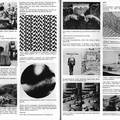
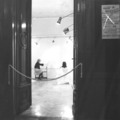
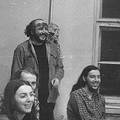
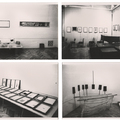
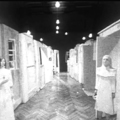
Utolsó kommentek